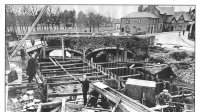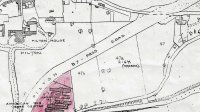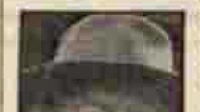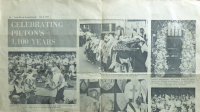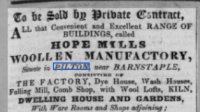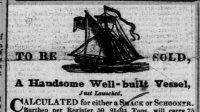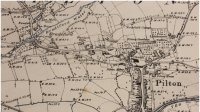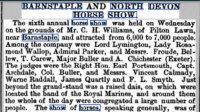Pictures
This is a mediaeval gold ring, set with a cabochon sapphire surrounded with a bezel engraved with a Hebrew inscription translated as ‘May Jesu Emmanuel Jehova be with us’, and on the reverse, in Latin ‘Lord Jesus be with us’.
Formerly wrongly described as the ‘Bishop’s Ring’, it was hidden in a clay ball and buried in a garden close to Pilton Churchyard in about 1535, with a young sapling planted there to mark the spot, when the Priory was dissolved by Henry VIII. Three hundred and thirty-two years later, in 1867, this tree fell, exposing the ball of clay in the roots. The owner of the site, Doctor Forrester, took the ring to the British Museum for identification, where it was judged to be probably ecclesiastical and dated between 1100 and 1130. The date of 1100 to 1130 for this ring is significant. Pilton Priory was founded in 1183-7 as a small cell dependent on Malmesbury Abbey – so the ring may have been given by the Abbot to the Prior as a mark of his office.
Three hundred and fifty-two years later, in 1535, the ring was hidden for safety in the roots of the tree, hopeful of retrieval later, but where it remained until 1867. Another 109 years passed by, until – in 1976 – the ring was presented to the North Devon Athenaeum for safe keeping by a member of the Chanter family of Barnstaple, to whom the ring had descended from Doctor Forrester.
These photographs are the copyright of the North Devon Athenaeum to whom thanks are due for permission to reproduce them.







